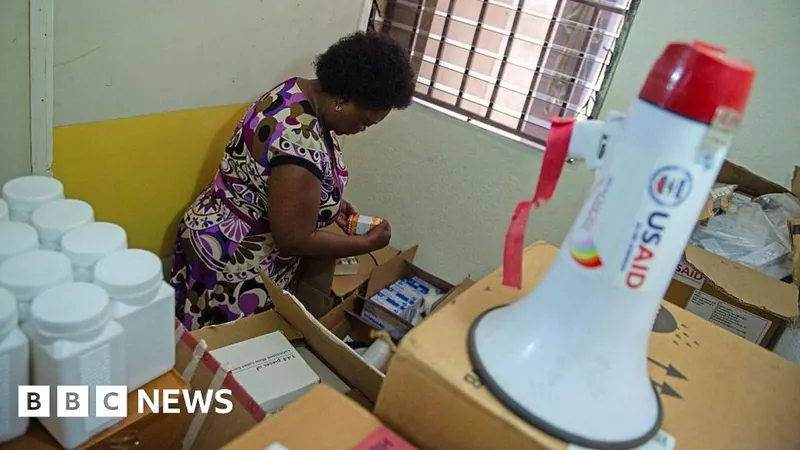
Revolutionary Breakthrough: Restoring Vision in Blind Mice with Nanotechnology
2025-06-17
Author: William
A Glimpse into the Future of Vision Restoration
Imagine a world where blindness can be reversed with cutting-edge technology! Researchers in China are making that dream a reality with their groundbreaking development of a retinal nanoprosthesis, capable of enhancing vision for those suffering from retinal degeneration.
The Science Behind Sight Restoration
Blindness due to retinal degeneration often results from the loss of vital photoreceptor cells. However, the retina remains connected to the brain’s visual cortex via other neurons. The innovative solution? Replacing these lost cells with a prosthesis that converts light into electrical signals, stimulating remaining retinal neurons.
Current prosthetic options, unfortunately, have limitations such as reliance on external power sources, inadequate long-term stimulation, and complex surgical implantations. Not to mention, many existing devices struggle with biocompatibility.
Introducing the Game-Changing TeNWNs
Enter the retinal nanoprosthesis developed by scientists at Fudan University, led by Shuiyuan Wang. This extraordinary device utilizes tellurium nanowire networks (TeNWNs) to process both visible and infrared light. Laboratory tests reveal it can restore lost vision and enhance natural sight in nearby infrared wavelengths.
Crafted through chemical vapor deposition, the tellurium networks feature an intricate atomic structure that is easily implantable in the subretinal space, simplifying the surgical process.
Innovative Testing and Results
The research team evaluated two device models, experimenting with different electrode configurations to gauge how internal defects affected the device's performance. Remarkably, one model delivered a staggering photocurrent of 288 mA cm² in response to visible and near-infrared light—far superior to previous technologies.
Stimulating Vision in Real-Time
Tests on blind mice revealed astounding results! When stimulated with visible and near-infrared light, the blind mice exhibited neural activity, similar to their sighted counterparts. The team’s findings highlighted the ability of the TeNWNs to successfully transmit visual information to the brain.
From Lab to Life: A New Era of Hope
Behavioral studies showed that these innovative mice could respond to light, and even to near-infrared signals—a feat that nonblind mice struggled with. Remarkably, their responses improved over seven days, suggesting the device's potential for ongoing efficacy.
To assess safety and viability, the researchers also successfully implanted the TeNWNs in macaque monkeys. Following 112 days of monitoring—with no adverse effects or complications—results showed that the implants enhanced vision without hindering responses to visible light.
A Bright Future Awaits
This compelling research opens the door to a future where people who are blind may regain their sight, potentially transforming lives worldwide. As the team confidently asserts, this innovative prosthesis could offer a safer, more effective solution, expanding visual capabilities beyond what current technologies can provide. The quest to restore sight is advancing, and the potential is exciting!









 Brasil (PT)
Brasil (PT)
 Canada (EN)
Canada (EN)
 Chile (ES)
Chile (ES)
 Česko (CS)
Česko (CS)
 대한민국 (KO)
대한민국 (KO)
 España (ES)
España (ES)
 France (FR)
France (FR)
 Hong Kong (EN)
Hong Kong (EN)
 Italia (IT)
Italia (IT)
 日本 (JA)
日本 (JA)
 Magyarország (HU)
Magyarország (HU)
 Norge (NO)
Norge (NO)
 Polska (PL)
Polska (PL)
 Schweiz (DE)
Schweiz (DE)
 Singapore (EN)
Singapore (EN)
 Sverige (SV)
Sverige (SV)
 Suomi (FI)
Suomi (FI)
 Türkiye (TR)
Türkiye (TR)
 الإمارات العربية المتحدة (AR)
الإمارات العربية المتحدة (AR)